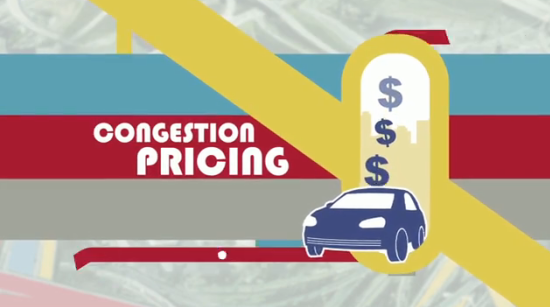Streetfilms has dropped the latest in its “Moving Beyond the Automobile” series, this time explaining the economics behind congestion pricing for automobiles.
The idea behind congestion pricing for automobiles is really pretty simple: “One of the most precious resources in a city is space, and that space needs to be priced.”
That’s how New York traffic expert Sam Schwartz explains the concept, which was first floated by Nobel prize-winning economist William Vickrey back in the 1950s.
Singapore has been charging drivers a fee to enter a city’s central business district during peak hours for 35 years. Stockholm does it. In London, congestion pricing was introduced in 2003, and transport officials in that city say it has reduced the number of vehicles entering the congestion zone by 20 percent. The fees have gone directly back into improvements for various other transit modes, including buses, subways, and cycling infrastructure.
But in the United States, congestion pricing has so far hit a political wall. A plan to introduce it in New York City failed in 2008, overwhelmed by opposition from Albany. Critics argue that it is a regressive tax that could hurt people without other transportation options. People seem to prefer
But as transportation budgets get squeezed other cities, like San Francisco, are taking another look. Does it make any sense? Watch the movie and let us know what you think.
Read (and watch) more:
“Moving Beyond the Automobile” series, Streetfilms
“How to make congestion pricing seem fun and fair” [VIDEO], Grist



